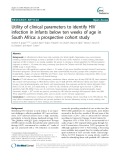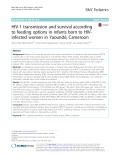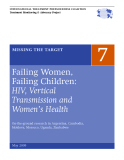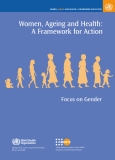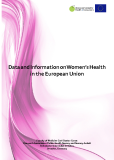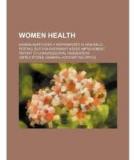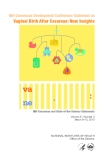
Vertical Transmission Prevention
-
As HIV-infected infants have high mortality, the World Health Organization now recommends initiating antiretroviral therapy as early as possible in the first year of life. However, in many settings, laboratory diagnosis of HIV in infants is not readily available.
 7p
7p  virubber2711
virubber2711
 21-03-2020
21-03-2020
 13
13
 1
1
 Download
Download
-
Evidence of 24-months survival in the frame of prevention of mother-to-child transmission (PMTCT) cascade-care is scare from routine programs in sub-Saharan African (SSA) settings.
 8p
8p  vidr2711
vidr2711
 19-02-2020
19-02-2020
 15
15
 0
0
 Download
Download
-
Coldwater disease (CWD) is a bacterial disease that affects a broad host-species range of fishes that inhabit cold, fresh waters. This disease occurs predominately at water temperatures of 16 C and below, and is most prevalent and severe at 10 C and below. Coldwater disease occurs in cultured and free-ranging populations, with hatchery-reared young trout and salmon species especially vulnerable to infections. Flavobacterium psychrophilum is the etiological agent of CWD.
 12p
12p  kethamoi1
kethamoi1
 20-11-2019
20-11-2019
 10
10
 1
1
 Download
Download
-
The situation is far different for women and families in poorer parts of the world, however. The vast majority of the 1.5 million women with HIV who become pregnant each year in the developing world do not have access to all (or, often, any) of these vital services. Only about one-third of them receive even the least effective drug regimen: a single dose of the drug nevirapine for themselves and another for their newborns, a therapy that has been shown to be at best, just over 40 percent effective in preventing vertical transmission. Most have no access to or knowledge...
 88p
88p  le_minh_nha
le_minh_nha
 18-12-2012
18-12-2012
 62
62
 4
4
 Download
Download
-
Research indicates that in most facilities the identification of HIV infection among women in prevention of vertical transmission programs is used as an entry point to recommend HIV testing and counselling to other family members. However, all respondents noted that the number of sexual partners who make use of these services is still extremely low.
 60p
60p  le_minh_nha
le_minh_nha
 18-12-2012
18-12-2012
 55
55
 5
5
 Download
Download
-
In general, pregnant women’s access to HIV testing is high due to the implementation in 2001 of a national policy mandating that all pregnant women be offered an HIV test at the first level of health care. However, one result of Argentina’s federal system is that there are great disparities around the country in terms of health care availability and quality, including in regard to prevention of vertical transmission coverage and services. In some cities fewer than 70 percent of pregnant women take an HIV test prior to going into labour2 .
 341p
341p  le_minh_nha
le_minh_nha
 18-12-2012
18-12-2012
 55
55
 7
7
 Download
Download
-
According to government estimates released in August 2008, about 134,000 HIV-positive individuals currently live in Argentina. Of those, about half are thought to be unaware of their status. Women comprise approximately one quarter of all people living with HIV, with the majority of cases among women aged 30 to 39. Between 1986 and 2007, a total of 3,857 individuals under 14 years of age were diagnosed with HIV.
 92p
92p  le_minh_nha
le_minh_nha
 18-12-2012
18-12-2012
 56
56
 5
5
 Download
Download
-
As noted through the research, a core demand of women living with HIV is increased access to contraceptives and other materials that can help increase their control over their reproductive lives. They also want better access to family planning counselling and sexual and reproductive rights information as part of routine health care. Recent steps appear to have been taken to address these needs.
 64p
64p  le_minh_nha
le_minh_nha
 18-12-2012
18-12-2012
 43
43
 3
3
 Download
Download
-
The best way to ensure that infants are not born with HIV or acquire it during breast-feeding is to provide HIV-positive women the care they need for their own HIV disease. Vertical transmission is certainly an issue where the false dichotomy pitting prevention and treatment against each other is truly nonsense—in studies where HIV-positive women get appropriate care, HIV transmission to infants is largely eradicated2 . Vertical transmission programs must be linked with HIV treatment programs.
 41p
41p  le_minh_nha
le_minh_nha
 18-12-2012
18-12-2012
 53
53
 5
5
 Download
Download
-
It is notable that even though Missing the Target researchers asked their diverse set of key informants specifically about the role of global agencies, the response was limited in most countries. This suggests that these global agencies need to be far more visible as advisors and advocates for comprehensive prevention of vertical transmission services that are integrated with HIV, maternal/child health, and sexual and reproductive services.
 0p
0p  le_minh_nha
le_minh_nha
 18-12-2012
18-12-2012
 53
53
 5
5
 Download
Download
-
United Nations agencies and global funding initiatives (such as the Global Fund and PEPFAR) have fundamental responsibility for realizing the potential of comprehensive services to prevent vertical transmission of HIV. These entities must be funders, coordinators, technical advisors and global champions. The research in the six countries covered in this report suggests that although several global entities have made important contributions to delivery of comprehensive services, their individual impacts have been constrained by insufficient linkages and collaboration.
 40p
40p  le_minh_nha
le_minh_nha
 18-12-2012
18-12-2012
 28
28
 3
3
 Download
Download
-
But this is just one measure of the failure of efforts to prevent vertical transmission. Following the global commitment at UNGASS in 2001, UN agencies designed a comprehensive program to prevent vertical transmission. This program was based on promoting a woman’s right to a continuum of care starting with sexual and reproductive health and treatment through to psychosocial and nutritional support. The four-prong strategy is stirring in focus and words, but actual progress and achievements have been far more limited.
 48p
48p  le_minh_nha
le_minh_nha
 18-12-2012
18-12-2012
 74
74
 11
11
 Download
Download
-
Governments and UN agencies have failed to meet their international commitments and should be called to account. Despite the relative ease of delivering the antiretroviral prophylaxis to prevent vertical transmission progress has been slow, with global coverage rising from 9 percent in 2004 to 33 percent coverage in 2007. At least three quarters of HIV-positive pregnant women in 61 countries, including Cameroon, Ethiopia, India and Nigeria, are still not receiving this intervention. Moreover, it is not enough merely to ensure access to ARV prophylaxis.
 48p
48p  le_minh_nha
le_minh_nha
 18-12-2012
18-12-2012
 47
47
 4
4
 Download
Download
-
At an implementation level there is a shocking lack of consistency and coordination among the donors, UN agencies and governments. Poor coordination has resulted most notably in a lack of clear and accurate guidance being provided on infant feeding options to HIV-positive mothers. In country after country, researchers were told of the widespread stigma and discrimination that HIV-positive pregnant women face, particularly in health care settings.
 336p
336p  le_minh_nha
le_minh_nha
 18-12-2012
18-12-2012
 50
50
 4
4
 Download
Download
-
Research conducted for Missing the Target 7 by civil society activists on-the- ground in six countries (Argentina, Cambodia, Moldova, Morocco, Uganda, and Zimbabwe) shows that efforts to prevent vertical transmission are failing to reach the very group it was designed for—HIV-positive pregnant women.
 33p
33p  le_minh_nha
le_minh_nha
 18-12-2012
18-12-2012
 57
57
 4
4
 Download
Download
CHỦ ĐỀ BẠN MUỐN TÌM








